What is account-based marketing (ABM)?
Account-based marketing (ABM) is a strategic approach to B2B marketing that focuses on targeting specific high-value accounts, or customers, rather than broad audiences. ABM involves creating personalised marketing campaigns and messaging for each targeted account, with the goal of building strong relationships and driving revenue growth.
ABM typically involves a coordinated effort between sales and marketing teams, where marketing creates targeted content and campaigns tailored to the needs and interests of each targeted account, while sales uses the insights gained from these efforts to build stronger relationships and close deals.
ABM can be a highly effective approach for companies looking to target large, high-value accounts with a long sales cycle, as it allows them to focus their efforts on the accounts most likely to generate significant revenue. However, it can also require a significant investment in time and resources, as each account requires a personalised approach.
Account Based Marketing (ABM): A Comprehensive Guide
Account Based Marketing (ABM) is a targeted, personalised approach to B2B marketing that focuses on high-value accounts and seeks to engage them in a coordinated, cross-functional way. ABM has become increasingly popular in recent years as B2B marketers have sought to improve the efficiency and effectiveness of their marketing investments. In this comprehensive guide, we’ll explore the definition and history of ABM, the benefits of ABM, the process for executing an ABM strategy, the different types of ABM, ABM and sales alignment, ABM metrics and measurement techniques, best practices for ABM, common challenges and how to overcome them, technology used for ABM, real-life examples and case studies, and any other relevant and up-to-date information to provide a complete understanding of Account Based Marketing.
Definition and History of Account Based Marketing
ABM is a marketing strategy that seeks to build long-term, high-value relationships with a specific set of target accounts. Unlike traditional B2B marketing, which is typically focused on a broad target market, ABM takes a more targeted, account-centric approach. ABM has its roots in direct marketing, which has long sought to build one-to-one relationships with high-value customers. However, ABM has evolved to incorporate a broader set of marketing tactics, including digital marketing, content marketing, and events.
Benefits of ABM
There are many benefits to adopting an ABM strategy, including:
- Increased efficiency: By focusing on high-value accounts, ABM enables marketers to be more efficient with their time and resources.
- Better alignment with sales: ABM helps align marketing and sales teams by giving them a common target to focus on.
- Improved ROI: ABM has been shown to generate higher ROI than traditional B2B marketing, as it focuses on high-value accounts that are more likely to result in significant revenue.
- Increased customer engagement: ABM enables marketers to build more personalised, relevant relationships with target accounts, which can lead to increased engagement and loyalty.
Benefit |
Example |
|
Increased return on investment (ROI)
|
By targeting specific accounts and decision makers with personalized campaigns, we can achieve a higher ROI compared to broader marketing efforts
|
|
Higher conversion rates
|
By personalising marketing messages and campaigns for specific accounts, we can improve engagement and conversion rates
|
|
Greater customer satisfaction
|
By building one-to-one relationships with customers through ABM, we can improve customer satisfaction and loyalty
|
|
Improved alignment between marketing and sales teams
|
By working together to identify and target key accounts, marketing and sales teams can be more effective at engaging and converting those accounts
|
|
More efficient use of marketing resources
|
By focusing on a smaller, targeted group of accounts, we can be more efficient in our use of marketing resources and achieve better results
|
|
Increased brand awareness among target accounts
|
By targeting specific accounts with personalised campaigns, we can increase brand awareness among those accounts
|
|
Improved targeting and personalisation of marketing messages
|
By using data and insights about specific accounts, we can tailor marketing messages to be more relevant and effective
|
|
Ability to track and measure the success of campaigns
|
By using ABM software and tracking tools, we can track and measure the success of our campaigns and make data-driven decisions
|
|
Enhanced data-driven decision making
|
By collecting and analysing data on target accounts and the success of our campaigns, we can make more informed, data-driven decisions
|
|
Potential for long-term, loyal relationships with customers
|
By building personalised, one-to-one relationships with customers through ABM, we can create long-term, loyal relationships that benefit both parties
|
Account-based marketing (ABM) offers numerous benefits for B2B companies that target larger accounts with long sales cycles and high deal sizes. Here are some of the top benefits of using an account-based marketing approach:
-
Personalised marketing approach:
Account-based marketing enables marketers to create personalised messaging and campaigns for specific target accounts. By analysing and understanding each account’s needs, preferences, and pain points, marketers can tailor their creative assets and messaging to resonate with those accounts. This approach increases the chances of successfully engaging with and converting those accounts, ultimately driving revenue growth.
Actionable tip: Conduct thorough research on your target accounts to understand their unique needs and preferences. Use this information to create customised campaigns that address their specific challenges and pain points.
-
Sales and marketing alignment:
Account-based marketing encourages collaboration between sales and marketing teams. Both teams work together to identify target accounts, create customised campaigns, and move accounts through the sales pipeline. The alignment between sales and marketing teams ensures that campaigns are effective, and sales teams have the resources they need to close deals successfully.
Actionable tip: Hold regular meetings between sales and marketing teams to discuss target accounts, share information, and identify opportunities for collaboration. This can help to ensure that both teams are on the same page and working towards common goals.
-
Shorter sales cycles:
In account-based marketing, all prospects in a target account are nurtured simultaneously, shortening the sales cycle. This approach helps to engage all stakeholders in the decision-making process, increasing the likelihood of closing deals faster.
Actionable tip: Create campaigns that target different stakeholders in the decision-making process. Ensure that the campaigns are customised to address the specific concerns and challenges of each stakeholder.
-
Clearer ROI:
Account-based marketing provides precise and measurable results, making it easier to determine ROI. By targeting specific accounts, marketers can measure the success of their campaigns against the revenue generated from those accounts, providing a clearer picture of the effectiveness of their efforts.
Actionable tip: Set clear goals for your account-based marketing campaigns and track the results against those goals. Use this data to adjust your strategies and tactics to achieve better results.
-
Fewer wasted resources:
Account-based marketing allows companies to focus their resources on a small number of high-value accounts, reducing wasted time and resources. Instead of targeting a broad audience, companies can concentrate on the accounts most likely to close deals successfully.
Actionable tip: Conduct a thorough analysis of your target accounts to identify those with the highest potential for revenue growth. Focus your marketing efforts on those accounts, ensuring that your resources are used efficiently.
The Process for Executing an ABM Strategy
The process for executing an ABM strategy typically includes the following steps:
- Account selection: Select the target accounts that will receive ABM treatment. This will typically include a combination of high-value accounts, accounts with high potential for growth, and accounts that are a good fit for your products or services.
- Account analysis: Conduct a deep dive into each target account to understand their needs, buying behavior, and decision-making process.
- Account planning: Develop a customised plan for each target account that includes the right mix of marketing tactics and messages to engage them.
- Account activation: Implement the account plan, which may include tactics such as targeted digital advertising, personalised content, events, and account-based sales outreach.
- Account measurement and optimization: Measure the results of your ABM efforts and optimise the strategy over time to achieve the best results.
Different Types of ABM
There are several different types of ABM, including:
- Strategic ABM: This is a high-touch, high-investment approach that is typically focused on a small number of high-value accounts.
- Programmatic ABM: This is a more scalable, automated approach that leverages technology to reach a larger number of target accounts.
- Operational ABM: This is an account-centric approach that seeks to align marketing, sales, and customer success teams around a common target account.
ABM and Sales Alignment
One of the key benefits of ABM is the alignment it can bring between marketing and sales teams. By focusing on a common set of target accounts, ABM helps to align the efforts of both teams and ensure that they are working together to achieve common goals. This alignment is critical for success, as research has shown that companies with strong sales and marketing alignment are 67% more effective at closing deals and generate 208% more revenue from their marketing efforts.
ABM Metrics and Measurement Techniques
Measuring the success of an ABM program can be challenging, as it involves tracking multiple metrics across multiple channels and touchpoints. Some common metrics used to measure ABM success include:
- Account engagement: This includes metrics such as website visits, email opens, and event attendance.
- Conversion rates: This includes metrics such as form submissions, demos booked, and deals won.
- Revenue generated: This includes metrics such as total revenue generated, average deal size, and lifetime value.
It’s important to use a combination of these metrics to get a complete picture of ABM success. Additionally, it’s important to establish a clear set of goals and KPIs upfront, and to track progress against those goals over time.
Best Practices for ABM
Some best practices for ABM include:
- Start with a clear understanding of your target accounts: Be sure to conduct a deep dive into each target account to understand their needs, buying behaviour, and decision-making process.
- Align sales and marketing teams: Ensure that both teams are working together to achieve common goals and are aligned on the target accounts and ABM approach.
- Personalise your approach: Use data and insights to create a personalised, relevant experience for each target account.
- Leverage technology: Use technology to scale and automate your ABM efforts and to track and measure success.
Common Challenges and How to Overcome Them
Some common challenges with ABM include:
- Lack of resources: ABM requires a significant investment of time and resources, which can be challenging for organisations with limited resources.
- Resistance to change: Changing marketing and sales processes can be difficult, and there may be resistance to adopting a new ABM approach.
- Lack of data and insights: It can be challenging to gather the data and insights needed to create a personalised, relevant ABM approach.
To overcome these challenges, it’s important to have strong leadership support, to clearly communicate the benefits of ABM to all stakeholders, and to build a cross-functional ABM team with the right skills and resources.
Technology Used for ABM and Its Role in Implementing ABM Strategies
Technology plays a critical role in implementing ABM strategies, as it enables marketers to scale their efforts, automate key processes, and track and measure success. Some common technologies used for ABM include:
- Marketing automation platforms: These platforms help automate key marketing processes and track engagement across multiple channels.
- Account-based advertising platforms: These platforms enable marketers to deliver targeted, personalised advertising to target accounts.
- Data and analytics tools: These tools help marketers gather and analyse data to inform their ABM strategies.
Real-Life Examples and Case Studies
There are many real-life examples and case studies of successful ABM programs, including:
- Intel: Intel used ABM to focus on a select group of target accounts, resulting in a 10% increase in revenue and a 20% increase in deal size.
- Salesforce: Salesforce used ABM to target a select group of key accounts, resulting in a 30% increase in win rates and a 50% reduction in sales cycle time.
- Microsoft: Microsoft used ABM to target high-value enterprise accounts, resulting in a 2x increase in pipeline and a 20% increase in deal size.
These examples illustrate the power of ABM and the impact it can have on revenue and sales performance. They also demonstrate the importance of personalised, data-driven approaches that deliver relevant, valuable experiences to target accounts.
Account-based marketing examples:
Account-based marketing (ABM) involves creating personalised marketing campaigns and messaging for specific target accounts, which can lead to numerous benefits for B2B companies. The following are examples of ABM tactics that companies can use to engage with their target accounts:
Events:
In-person events can be personalized for key prospects from target accounts, including invitations, VIP dinners, gifts, and personalized follow-up. By creating a customized experience, companies can increase the chances of engaging and converting those accounts.
Actionable tip: Use data on your target accounts to personalise your event invitations and follow-up. Consider hosting small, intimate events for high-value accounts to create a more personalised experience.
Webinars:
Webinars can be customised for specific target accounts by creating unique content and tailoring follow-up communications. By addressing the specific needs and pain points of each account, companies can increase the likelihood of engaging and converting those accounts.
Actionable tip: Use data on your target accounts to develop webinar topics and create tailored follow-up communications. Consider partnering with industry experts or thought leaders to create high-quality content that resonates with your target accounts.
Direct mail:
Direct mail can be a highly effective way of reaching prospects within a company, especially in an age where email is increasingly cluttered. By sending personalized gifts and marketing materials through direct mail, companies can create a memorable experience for their target accounts.
Actionable tip: Use data on your target accounts to develop personalised direct mail campaigns. Consider sending high-quality gifts or unique, branded merchandise that aligns with the interests and preferences of your target accounts.
Email campaigns:
Email is still a valuable marketing channel for ABM, but it requires a more tailored approach than volume-based marketing. By crafting personalized email messages for each company and individual, companies can increase the chances of engaging and converting their target accounts.
Actionable tip: Use data on your target accounts to develop personalised email campaigns. Consider segmenting your email lists based on the interests and preferences of your target accounts and testing different messaging and creative assets.
Paid advertising:
Paid advertising, such as PPC and paid social media ads, can be targeted to specific companies and personas. By using technology such as IP targeting and retargeting, companies can create display campaigns that focus on a handful of target accounts rather than casting a wide net.
Actionable tip: Use data on your target accounts to develop targeted paid advertising campaigns. Consider using retargeting to reach accounts that have already shown interest in your company or products.
Web personalization:
Web personalisation technology can be used to create a tailored, account-specific experience for target prospects on a company’s website. By creating a more personalised experience, companies can increase the chances of engaging and converting their target accounts.
Actionable tip: Use data on your target accounts to develop personalised website experiences. Consider using dynamic content or personalized landing pages to create a more tailored experience for your target accounts.
How to implement account-based marketing
Implementing account-based marketing (ABM) can be a powerful way to target high-value accounts and drive revenue growth for your company. Below are actionable insights to guide you through the process:
Step 1: Identify high-value target accounts
Start by identifying the key accounts that have the potential to contribute the most to your company’s revenue. These accounts should be the focus of your ABM efforts. Use data to identify accounts with the highest potential and prioritize them based on revenue potential.
Actionable Insight: Use a CRM system to identify and prioritize high-value target accounts. Use data to determine which accounts are most likely to convert and drive revenue growth.
Step 2: Conduct research on those accounts
Once you have identified your target accounts, conduct research to get a better understanding of their needs, pain points, and where they are in their customer journey. This information will help you tailor your marketing campaigns and messaging to resonate with your target audience.
Actionable Insight: Use data to understand your target account’s preferences, interests, and behavior. Conduct interviews with key decision-makers to get a deeper understanding of their needs and pain points.
Step 3: Develop customised marketing campaigns
Using the insights gained from the research phase, develop customised marketing campaigns that resonate with your target accounts. This could include personalized emails, targeted ads, or tailored content that speaks directly to the needs and pain points of your target audience.
Actionable Insight: Use data and insights to develop messaging that speaks directly to your target account’s needs and pain points. Create content that is tailored to their specific interests and preferences.
Step 4: Run your customised marketing campaigns
Launch your customized marketing campaigns to your target accounts. Monitor the performance of your campaigns and adjust your strategy as needed.
Actionable Insight: Use marketing automation tools to run and monitor your campaigns. Use data to determine which tactics are most effective and adjust your strategy accordingly.
Step 5: Measure your customised marketing campaigns
Measure the performance of your customized marketing campaigns to determine their impact on revenue growth. Analyze the data to determine which campaigns were most effective and use this information to optimize your future campaigns.
Actionable Insight: Use data analytics to measure the success of your campaigns. Monitor key performance metrics such as conversion rates, engagement rates, and revenue growth. Use this data to optimize your future campaigns and drive continued growth.
Get Started!
Account-based marketing provides a powerful and effective way to reach and engage high-value target accounts, resulting in increased revenue, stronger customer relationships, and more personalized marketing campaigns. By focusing on the needs and pain points of individual accounts, and tailoring marketing efforts to those specific needs, businesses can establish a competitive edge in today’s crowded marketplace.
If you haven’t already started implementing account-based marketing, now is the time to do so to stay ahead of the curve and maximise your business’s potential for success.

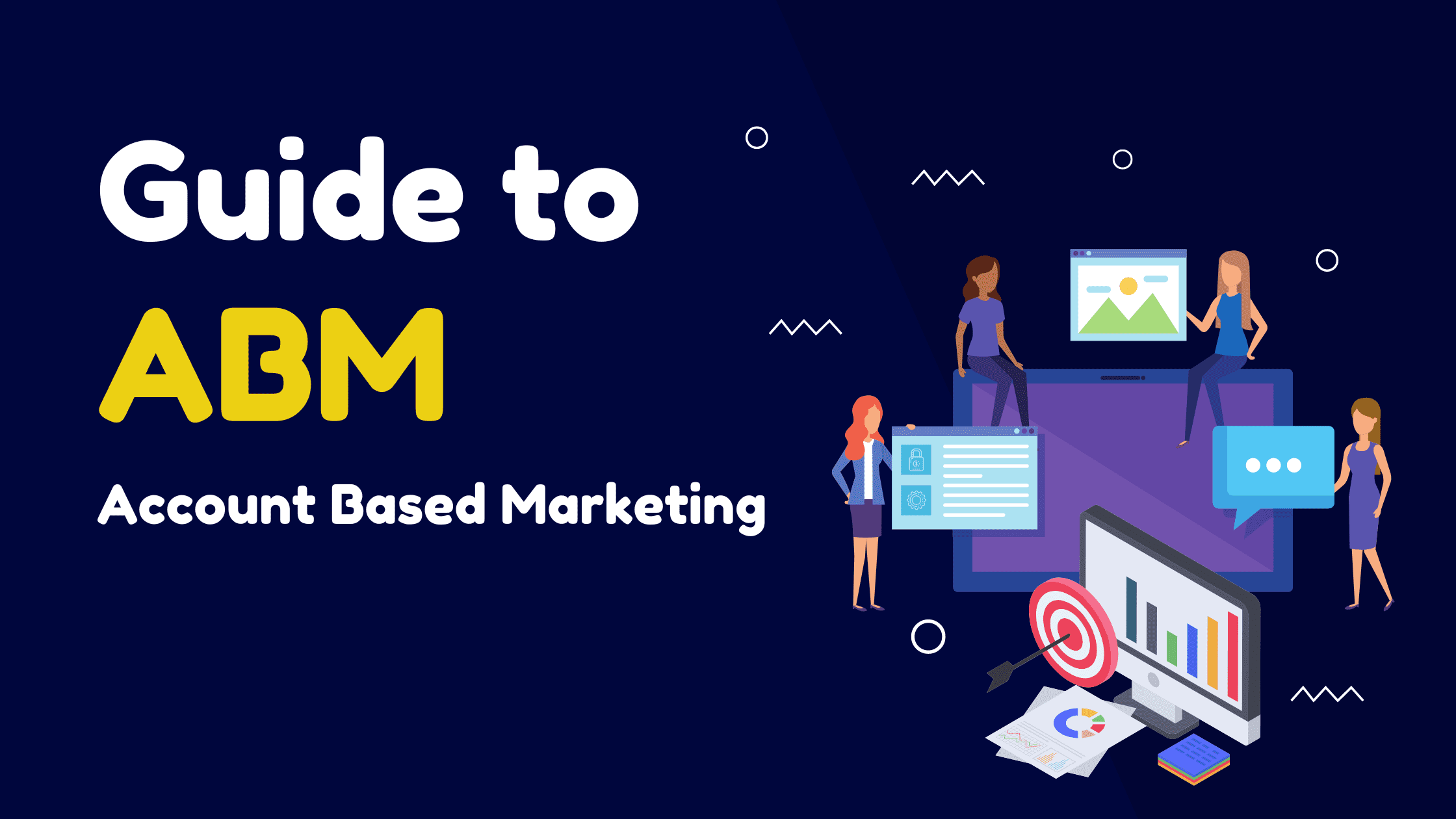
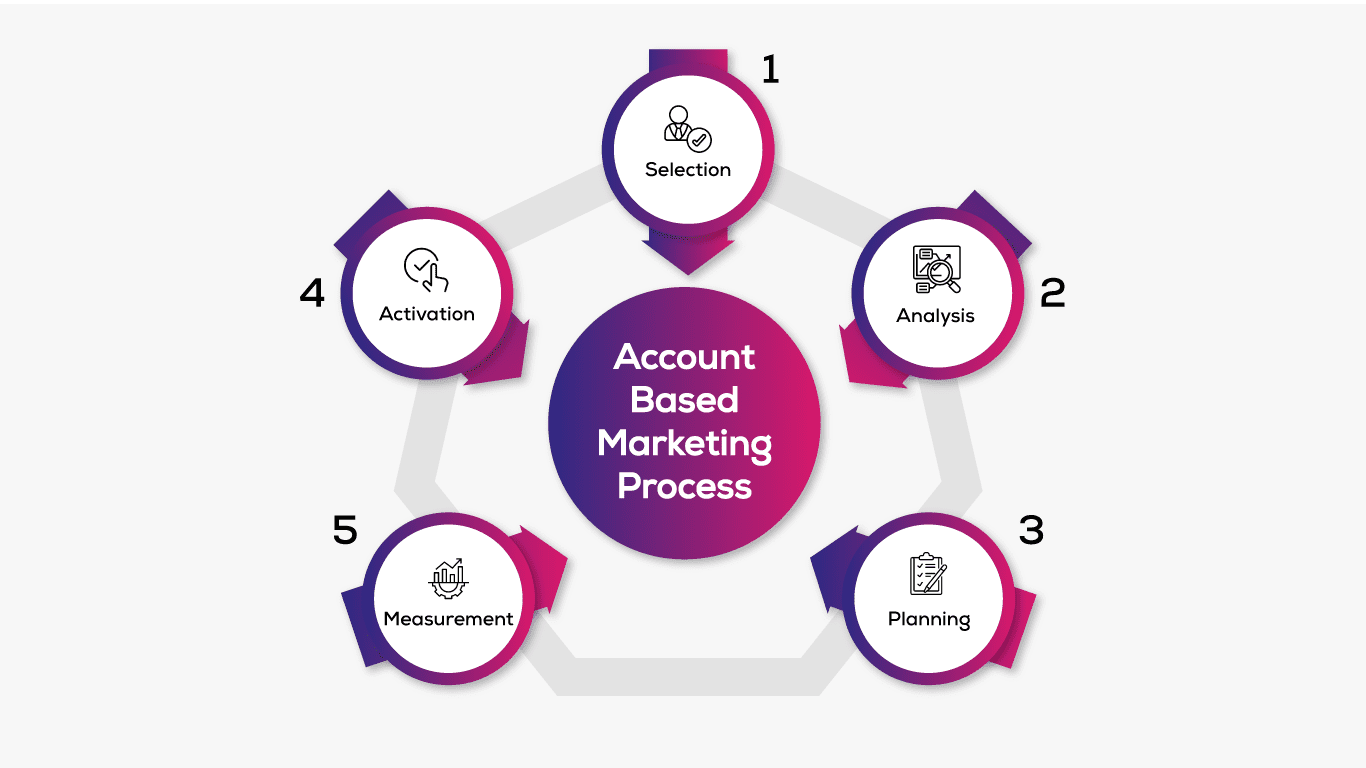
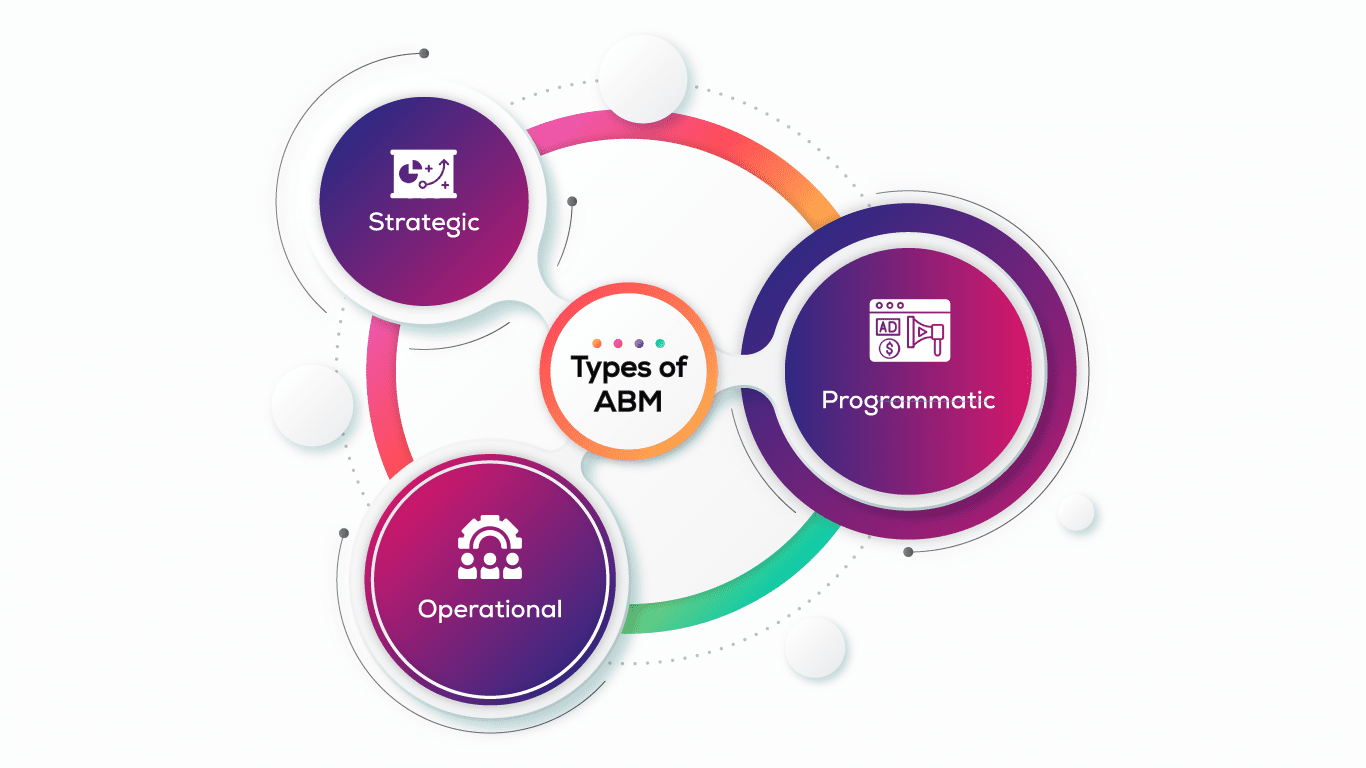
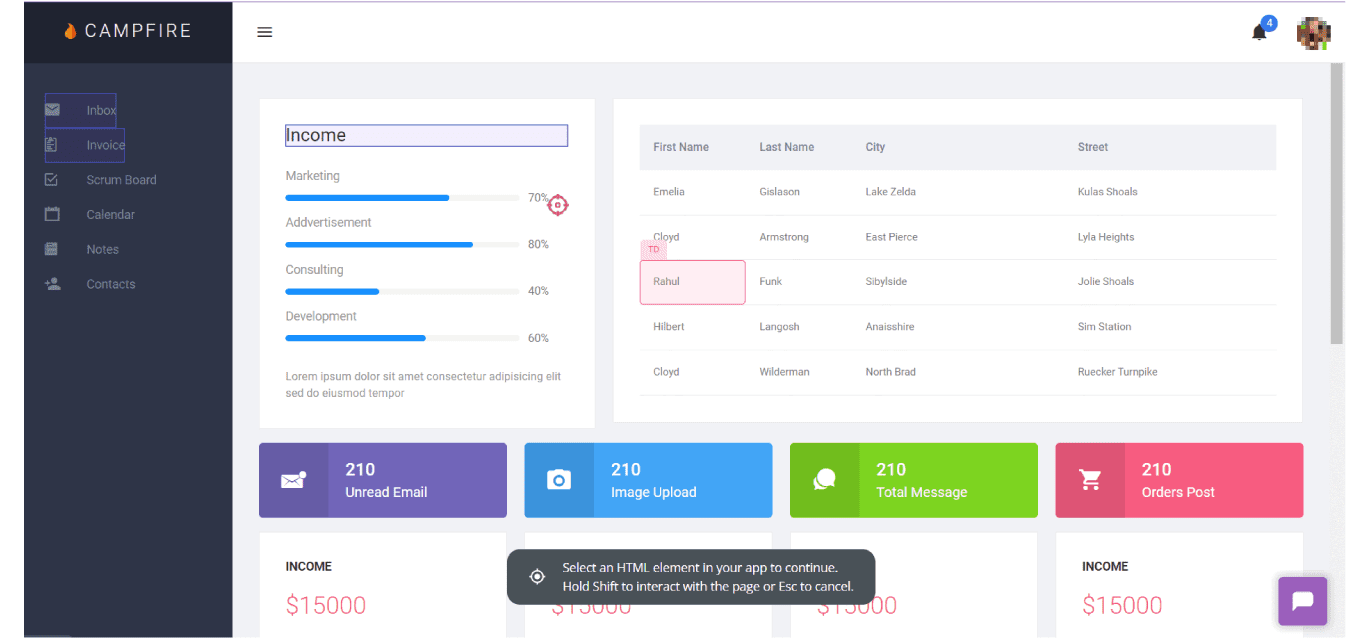
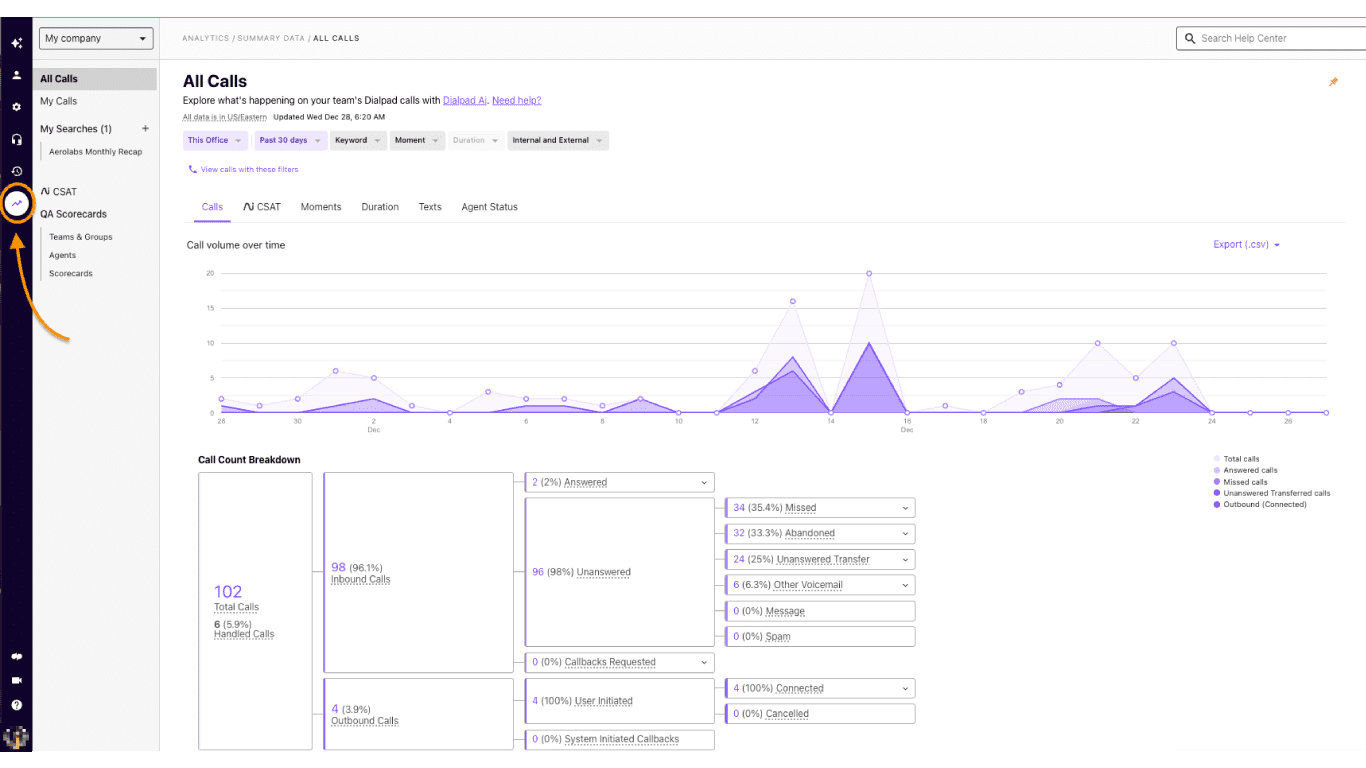
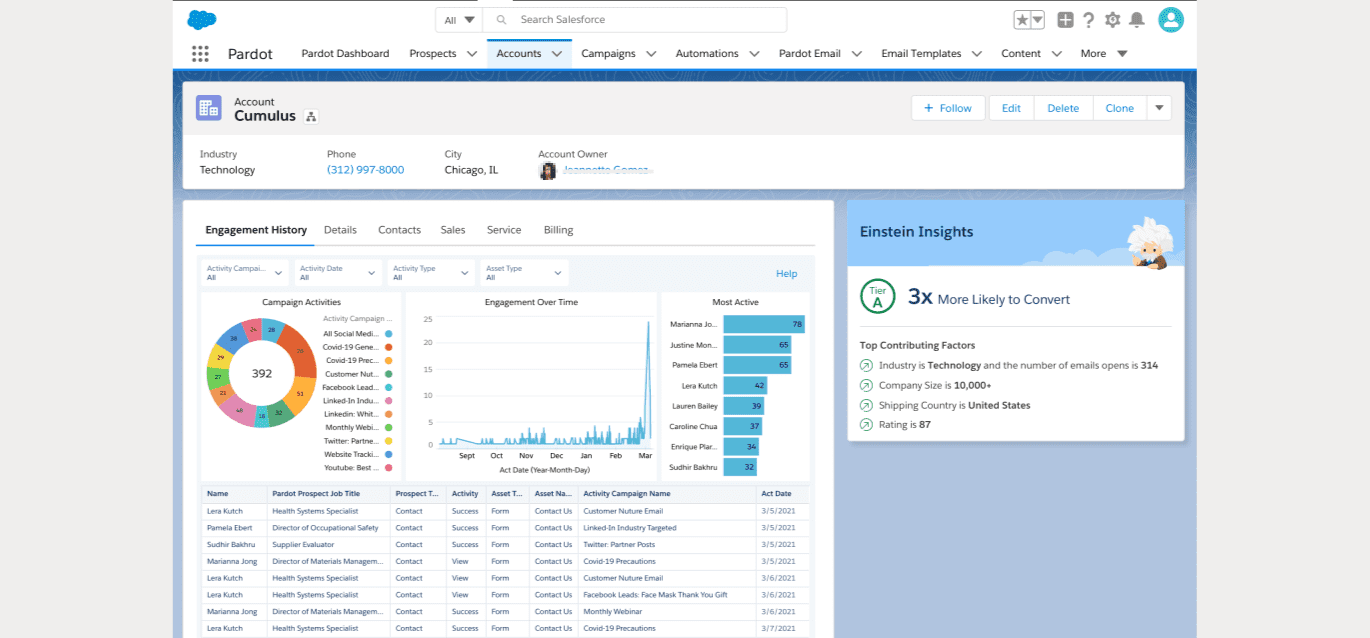
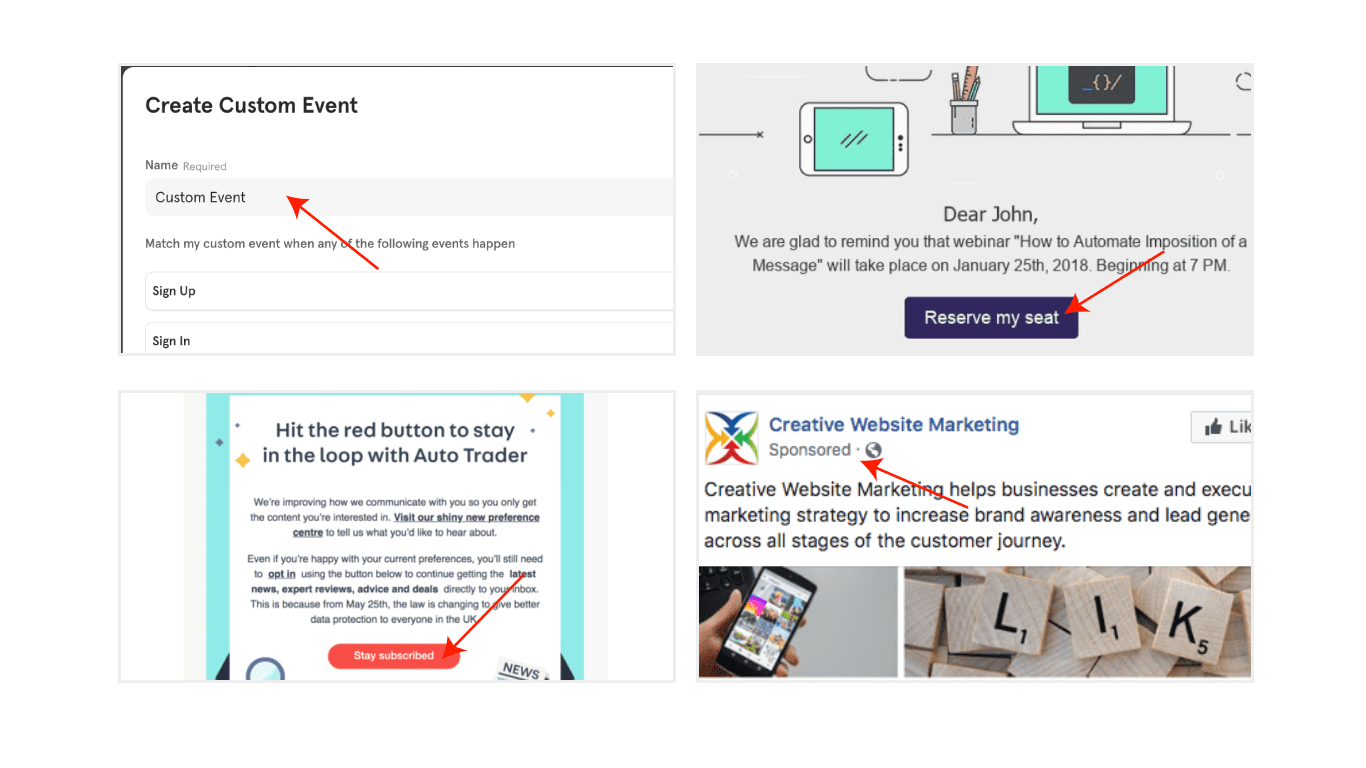
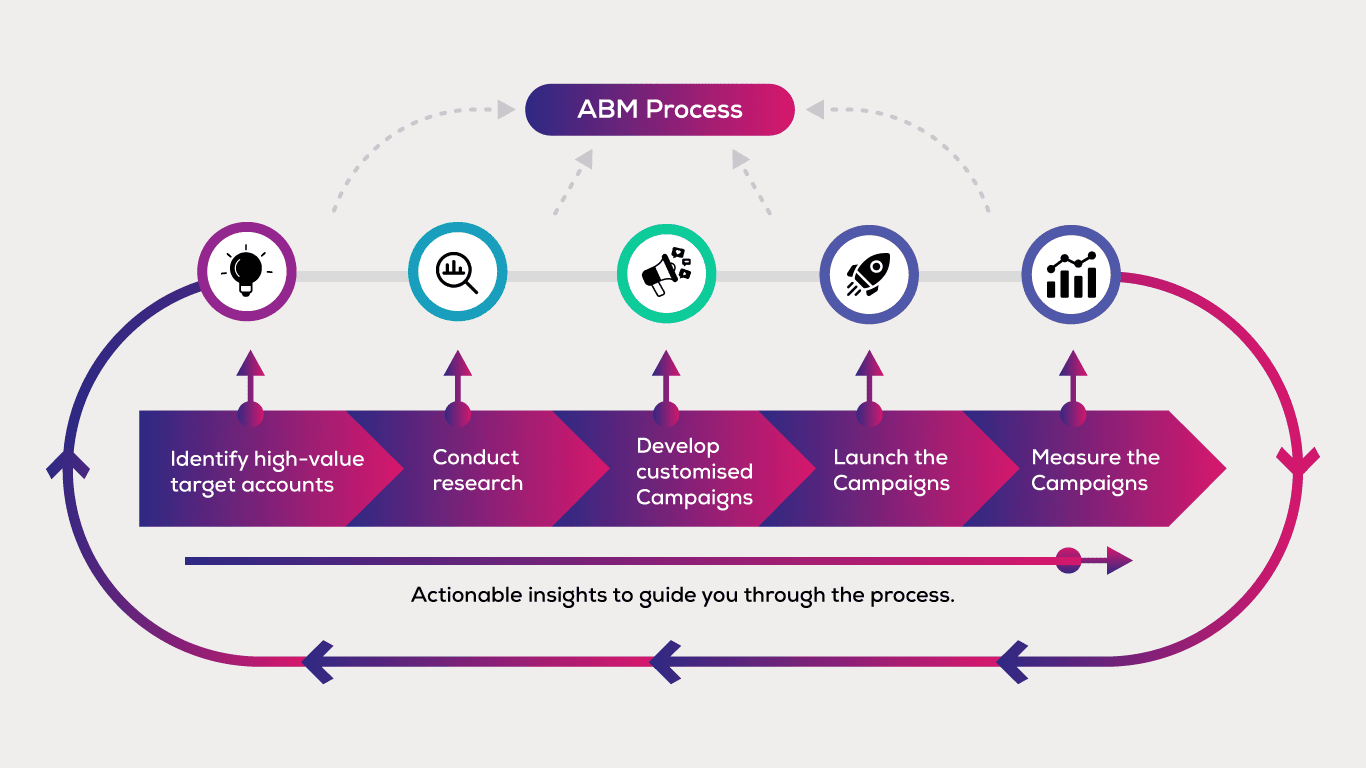








Leave a Comment